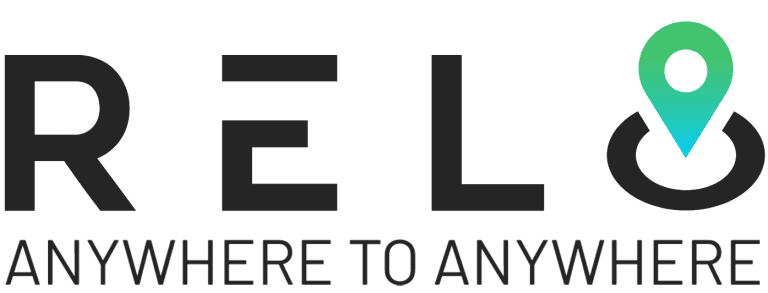Retirement, a significant milestone, traditionally marked the end of a career and the start of a new chapter. It used to be a one-way street – out with the old, in with the latest. But these days, things are more flexible. Phased retirement programs are like an off-ramp, letting you ease off the full-time grind into a more relaxed pace. Why the change? People today want more control over their golden years.
It lets you tailor your exit strategy, fitting your needs and keeping you engaged (if you want to be!).
So, buckle up! We’re about to unpack the ins and outs of phased retirement and show you how it works.
What is Phased Retirement?
Phased retirement is a flexible, adaptable work arrangement that allows employees to gradually reduce their workload and hours as they transition from full-time employment to retirement. Instead of abruptly ceasing work, individuals can thoughtfully scale back their commitments over time, typically through reduced hours, part-time work, or job-sharing arrangements.
This thoughtful approach not only eases the emotional and financial shock often associated with retirement but also caters to the growing, persistent desire among aging workers to remain engaged and significantly productive. This effective method benefits employers by allowing them to retain experienced talent longer, ensuring a smoother, more reliable knowledge transfer and continuity within the workplace.

?Related – 7 Creative Ways to Make Extra Money in Retirement
How Does Phased Retirement Work?
It is a work arrangement that allows employees nearing retirement age to reduce their working hours over a set period while still receiving a portion of their salary and, in some cases, retaining benefits such as health insurance. Employers tailor this arrangement based on the needs of both the employee and the organization, involving part-time work or temporary assignments.
During this transition, employees often engage in mentorship roles, sharing their knowledge and experience with younger colleagues, which benefits the entire organization. This gradual reduction in hours enables employees to adjust more comfortably to the lifestyle changes retirement brings, while employers can plan better for workforce adjustments.
Example of a Phased Retirement Plan
It plans to meet the needs of both employees and employers, providing a structured approach to transitioning from full-time work to retirement. Employers collaborate with employees to customize schedules and responsibilities, ensuring a smooth and mutually beneficial transition process.
Let’s consider an example of a retirement plan for an individual nearing retirement age in a corporate setting –
| Phase | Work Schedule | Responsibilities | Duration |
| Phase 1 | 3 days/week | Mentorship and training | 6 months |
| Phase 2 | 2 days/week | Project management | 9 months |
| Phase 3 | 1 day/week | Advisory role | 12 months |
Benefits of Phased Retirement
It offers several benefits for employees and employers, promoting a more inclusive and diverse workforce by allowing older employees to contribute their experience and wisdom while creating opportunities for younger talent to grow and advance within the organization.
Now, let’s explore the benefits –
- Gradual Transition – Allows a significantly smoother transition from full-time work to retirement, easing employee adjustment. This method helps employees psychologically prepare for full retirement while staying actively engaged in their professional roles.
- Financial Stability – Employees continue to earn a salary and may retain benefits, helping them maintain financial stability as they gradually retire. This ongoing income can also assist with unexpected expenses and significantly ease the transition into using retirement savings effectively.
- Extended Health Benefits – Employees can keep their health insurance and other essential benefits longer in many plans. This vital continuity of care is crucial for effectively managing health issues that often arise when reaching normal retirement age.
- Work-Life Balance – Reducing work hours can lead to better work-life balance, giving retirees more time to enjoy personal interests and family while still engaged professionally. It also allows them to gradually explore new pursuits that can fill their time once fully retired.
Additional benefits include the following –
- Knowledge Retention – Retains experienced employees who mentor others and share crucial knowledge.
- Reduced Stress – Eases the transition into retirement, reducing stress from sudden changes.
- Increased Job Satisfaction – The flexibility boosts job satisfaction and loyalty among older employees.
- Supports Workforce Planning – Aids in managing workforce demographics and succession planning.
?♀️ Also read – What is the Retirement Savings Contribution Credit?
Strengths and Limitations of Phased Retirement
While it brings significant benefits, it has specific strengths and limitations that can affect its feasibility and effectiveness. The flexibility and gradual transition offered by phased retirement may only be available or suitable in some jobs or industries, requiring careful consideration of its practicality.
Let’s examine the strengths and limitations –
Strengths
- Flexibility – Allows employees to tailor their work and retirement balance to suit personal and professional needs.
- Continued Engagement – Maintains active engagement of experienced workers, fostering a productive work environment.
- Knowledge Transfer – Facilitates the transfer of expertise and corporate memory to younger employees, safeguarding organizational knowledge.
- Reduced Turnover Costs – By retaining veteran employees longer, companies can reduce the costs of recruiting and training new staff.
Limitations
- Complex Coordination – Requires detailed planning and agreement between employer and employee, which can be resource-intensive.
- Not Universally Applicable – Some roles, particularly those requiring physical presence or specialized tasks, may not suit this approach.
- Limited Availability – Some employers only provide these options, restricting access for certain workers.
- Potential for Reduced Benefits – Employees may face reduced benefits depending on the arrangement, which can affect their long-term financial security.
Retirement in the 21st Century
A 2016 study by the TransAmerica Center for Retirement Studies revealed that almost three-quarters of employers surveyed across 1,800 companies of various sizes indicated that many of their employees expect to work beyond age 65 or do not plan to retire. While 80% of these companies intend to support senior employees wishing to continue working, only 40% offer flexible schedules.
A white paper by AARP states, “Phased retirement lacks a precise definition.” The term generally refers to various retirement arrangements, ranging from informal practices to formal policies, that enable employees nearing the standard retirement age to decrease their working hours or continue working in a different role post-retirement.
The AARP report highlights several reasons prompting workers to delay retirement –
“Changes in Social Security have made it easier for recipients to continue working after reaching full retirement age without losing their benefits; Americans are living longer, which means that retirees will need greater financial resources to support themselves.”
In 2020, the Social Security Administration permitted up to $18,240 of earned income for individuals below the full retirement age without affecting their Social Security benefits. This limit increased to $18,960 in 2021, the year an individual reaches their full retirement age.
These strategies enable companies to maintain essential operations by keeping crucial personnel, enhancing productivity through improved work-life balance, and cutting costs related to hiring and training new staff.
Recommended read – 6 Typical Average Monthly Retirement Expenses & How to Minimize Them
Implementing Phased Retirement Programs
Organizations must consider various factors to implement retirement transition programs successfully. These include legal and regulatory requirements, employee demographics, and organizational culture. Clear communication and support from leadership are essential to ensure the success and effectiveness of these initiatives. Understanding financial impacts is critical to effective program development.
Developing a tailored approach that aligns with employee needs and business goals is crucial, as well as providing flexible work options and redefined roles. Establishing a feedback system to monitor the program’s impact and making adjustments as necessary can further enhance its success. Training for managers on handling these transitions can also play a significant role in smoothing the process for all parties involved.
In a nutshell
Phased retirement marks a significant shift in viewing the transition from work to retirement. It offers a flexible, gradual pathway that aligns with the needs and preferences of today’s workforce, ensuring easy and financially secure golden years of retirement. Adopting plans will likely play a crucial, transformative role in actively shaping the future of work and retirement.
Find how our innovative approach to phased retirement, including relocation options, can redefine your journey toward the golden years.
Adopt flexibility and continue contributing your valuable expertise with a personalized plan that suits your needs.
Contact us and fix a meeting today to learn how it can improve your transition and secure your future ?.
Join Relo.AI to shape a more brilliant retirement strategy.









